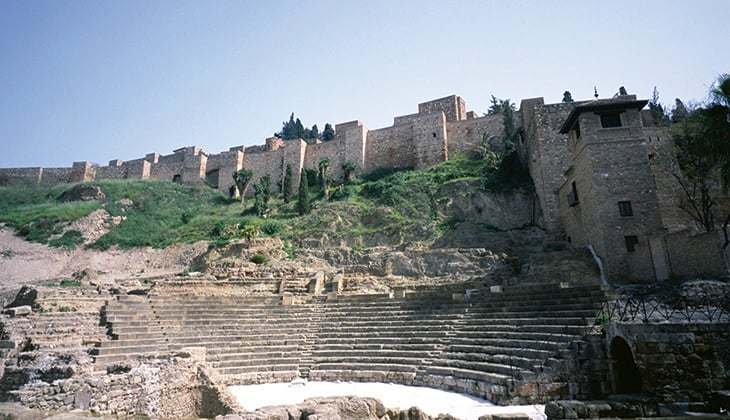There is a part of history that stays buried for centuries. And only a part of this part comes to light for us to admire in the present. Some buildings, cultures and peoples are discovered just by chance. This was the case of Málaga's Roman Theatre, a vestige of the Iberian Peninsula under the Romans that has remained hidden from view for thousands of years, buried amidst the city's rich architectural heritage.
The ruins of the Roman Theatre were unearthed during the construction of the Málaga House of Culture. It had been there for centuries, having been built in the days of Augustus and active until the third century AD. Then it fell into disuse as a cultural venue and served as a quarry to build Málaga's Arab Fortress or as a fish-salting warehouse, as attested by the fish waste found on the site.
Antonio Banderas, actor in the shadows
Architect Pons Sorolla was commissioned to rehabilitate the theatre in 1960. After 40 years of work, the Roman Theatre became a performance hall again in 2011. However, the first contemporary performance on its stage was not really on 16 September 2011.
The theatre had been used for censored shows in the days of Franco's dictatorship. Hollywood star Antonio Banderas was one of the performers who challenged Franco's censors while standing on the precarious stage of the Roman Theatre.
Three sections of the original building are still present in Málaga's Roman Theatre: the cavea, the orchestra and the proscaenium.
- Cavea: seating section surrounding the stage. The cavea used to be organised in horizontal sections and vertical cunei (wedge-shaped divisions) separated by scalae (stairs).
- Orchestra: semicircular space in front of the stage used by the chorus and the authorities.
- Proscaenium: the stage area.
The rehabilitation project included the development of a Visitor Centre next to the theatre – a small gallery going over the history of the building with the aid of new technologies. Touchscreens invite visitors to see how the Roman Theatre changed through the ages. The exhibition also includes a few additional pieces unearthed during the archaeological work.
Today, Málaga's Roman Theatre continues to host performances, especially in the summer.








